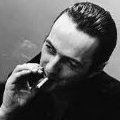Icon NOW: Capturing Real Moments with a Thai Documentarian
-
Recently Browsing 0 members
- No registered users viewing this page.
-
Topics
-
-
Popular Contributors
-
-
Latest posts...
-
35
Oasis Tour
saw them at the marquee in london before their first album came out. they weren't much good then, aren't much better now. -
-
56
-
55
-
168
Should I return to the UK - difficult decision!
If that's true, they are soon going to have to fend for themselves. Stop the funding now, earn your $60k a year for two years. Then you'll have money and won't need to worry. Simple. Failing that, I'm sure done AN members would help with funding. Post details of your charity here. Could be good for them. -
168
Should I return to the UK - difficult decision!
State pension qualification is based on NI paid. Savings don't cone into it.
-
-
Popular in The Pub














Recommended Posts
Create an account or sign in to comment
You need to be a member in order to leave a comment
Create an account
Sign up for a new account in our community. It's easy!
Register a new accountSign in
Already have an account? Sign in here.
Sign In Now